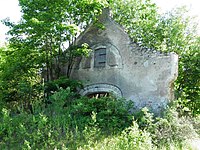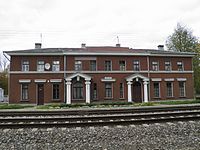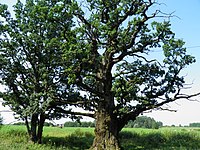
Semigallia is one of the Historical Latvian Lands located to the south of the Daugava and to the north of the Saule region of Samogitia. The territory is split between Latvia and Lithuania, previously inhabited by the Semigallian Baltic tribe. They are noted for their long resistance (1219–1290) against the German crusaders and Teutonic Knights during the Northern Crusades. Semigallians had close linguistic and cultural ties with Samogitians.

Andrejs Pumpurs was a poet who penned the Latvian epic Lāčplēsis and a prominent figure in the Young Latvia movement. Working in the land before volunteering to fight in Serbia against the Ottoman Empire in 1876, he became a loyal officer in the Russian army and also a staunch promoter of the Latvian culture.
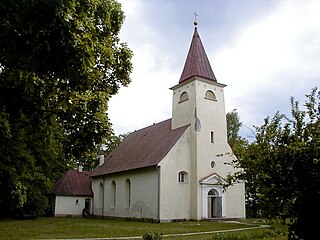
Lielvārde, population 5885, is a town in Ogre Municipality in the Vidzeme region of Latvia, on the right bank of the Daugava river, 52 km southeast of Riga.

Ikšķile is a town in Latvia, in Ogre Municipality. It was the first capital of the Roman Catholic Bishopric of Livonia, known by the German name of Üxküll. Saint Meinhard was the first bishop of Üxküll. In 1197, Berthold of Hanover, a Cistercian abbot of Loccum, was made the second bishop of Üxküll. Those days the town was the center of the upcoming crusading activities in the Livonian area. Bishop Berthold moved the episcopal see to Riga, before being killed by the Livs in battle.

On 1 July 2009 the 26 districts of Latvia, introduced in 1949 by the Soviet occupation authorities to supersede counties, were divided into 77 cities, 10 amalgamated municipalities, 24 rural territories and 475 parishes.

Aizkraukle Municipality is a municipality in Vidzeme, Latvia. Its center is the town of Aizkraukle. The municipality was first formed in 2001 by merging Aizkraukle and Aizkraukle Parish. The population in 2020 was 8,024.

Skaistkalne Parish is an administrative unit of Bauska Municipality in the Semigallia region of Latvia. Prior to the 2009 administrative reforms it was part of Bauska District.
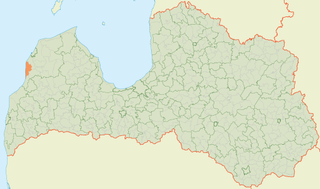
Užava parish is an administrative unit of the Ventspils Municipality, Latvia. The parish has a population of 619 and covers an area of 125.518 km2.

Ziras Parish is an administrative unit of the Ventspils Municipality, Latvia.The parish has a population of 543 and covers an area of 153.80 km2.

Liepa Parish is an administrative territorial entity of Cēsis Municipality in the Vidzeme region of Latvia. Prior to 2009, it was an administrative unit of the former Cēsis District.

Ķegums Municipality is a former municipality in Latvia. The municipality was formed in 2002 by merging Rembate parish and Ķegums town with its countryside territory. In 2009 it absorbed Birzgale parish, too the administrative centre being Ķegums.
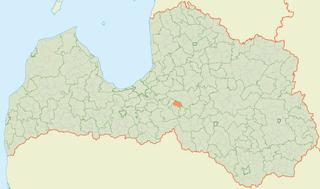
Lēdmane Parish is an administrative unit of Ogre Municipality in the Vidzeme region of Latvia.

Ēdole Parish is an administrative unit of Kuldīga Municipality in the Courland region of Latvia. The parish has a population of 1021 and covers an area of 144.49 km2.
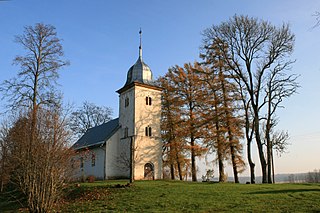
Vecpils Parish is an administrative unit of South Kurzeme Municipality, Latvia. The parish has a population of 529 and covers an area of 80.2 km2.

Bauska Municipality is a municipality in Zemgale, Latvia. The municipality was formed in 2009 by merging Brunava parish, Ceraukste parish, Code parish, Dāviņi parish, Gailīši parish, Īslīce parish, Mežotne parish, Vecsaule parish and Bauska town, the administrative centre being Bauska.

Lielvārde Castle is a castle in Lielvārde, a town in Ogre Municipality in the Vidzeme region of Latvia.The castle was built at the steep bank of Daugava River, overseeing this important medieval waterway, before 1248 by Albert of Buxthoeven, an archbishop of Riga. During the Livonian War, Lielvārde Castle was destroyed by Russian troops in 1579. Its ruins are conserved up to the level of the second floor.

Ciecere Parish is an administrative unit of Saldus Municipality, Latvia. It was created in 2010 from the countryside territory of Brocēni town. At the beginning of 2014, the population of the parish was 1028.
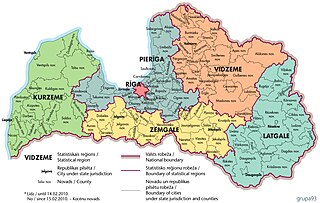
Pierīga Region was one of the six statistical regions of Latvia. On October 27, 2024, the region was merged with Vidzeme.
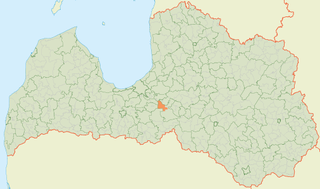
Tome Parish is an administrative unit of Ogre Municipality in the Semigallia region of Latvia.

Linde Manor was a manor house in Linde, Birzgale Parish, Ogre Municipality in the Semigallia region of Latvia. It is situated on the left bank of the Daugava. It was destroyed during the First World War and never restored, only minor ruins remain. Detailed sketches of Linde Manor have been preserved. The 18th century Linde Manor Gates and Linde Manor Park are architectural monuments of national significance and have been preserved.







